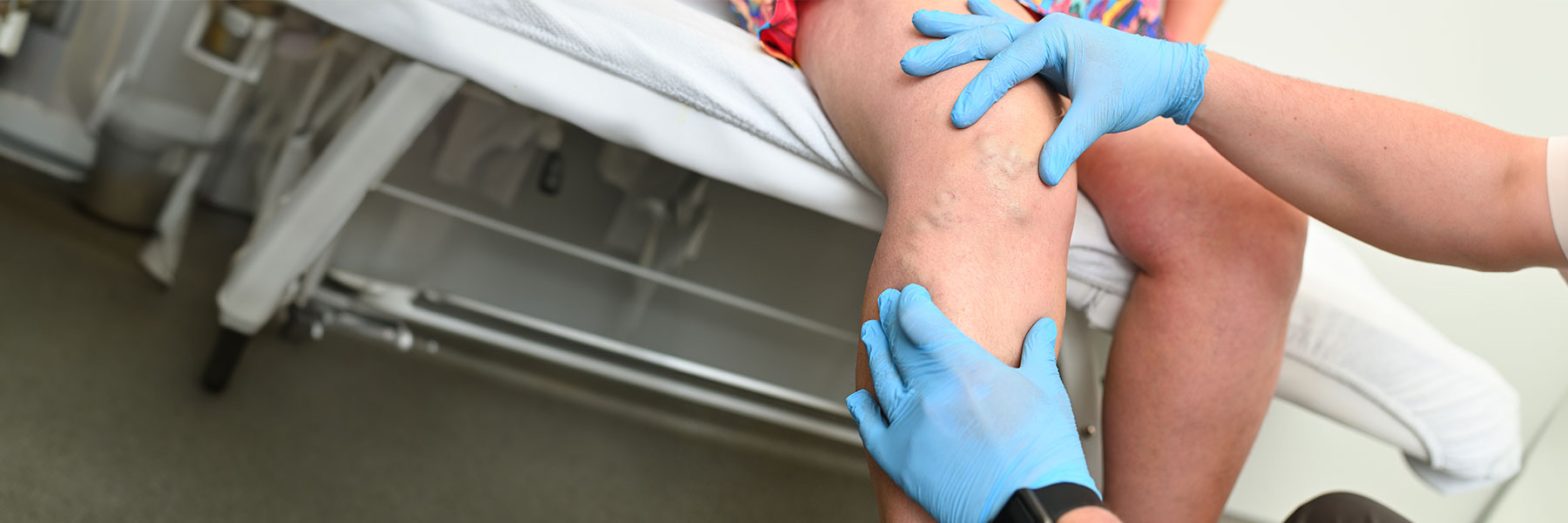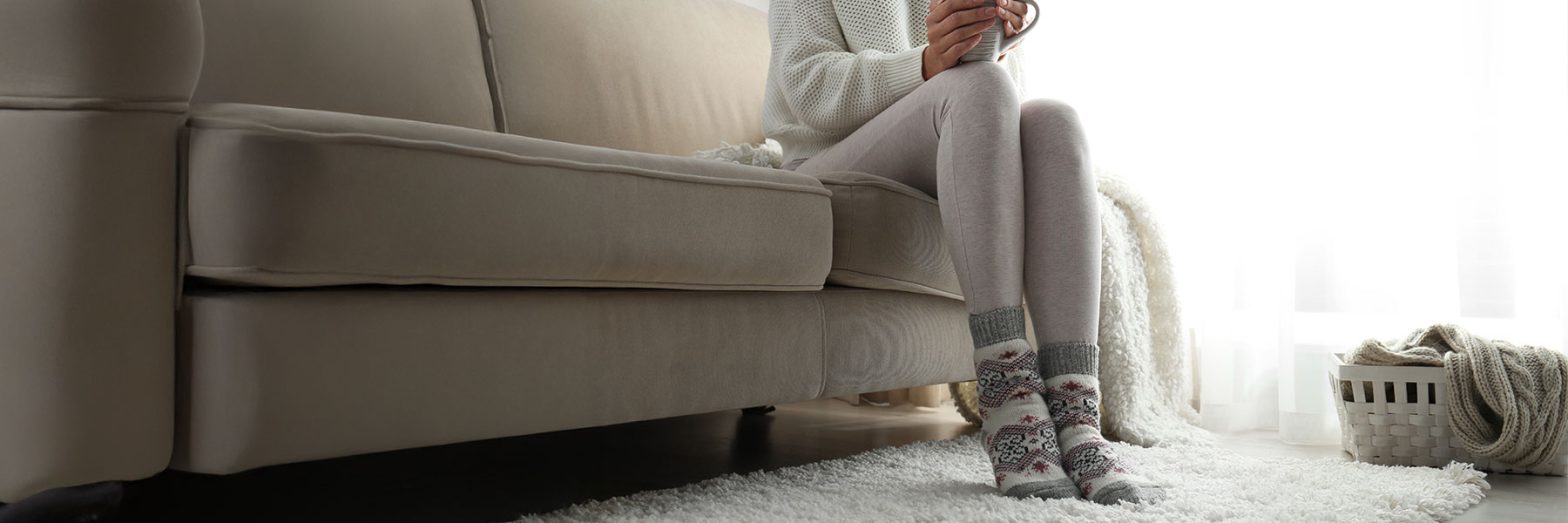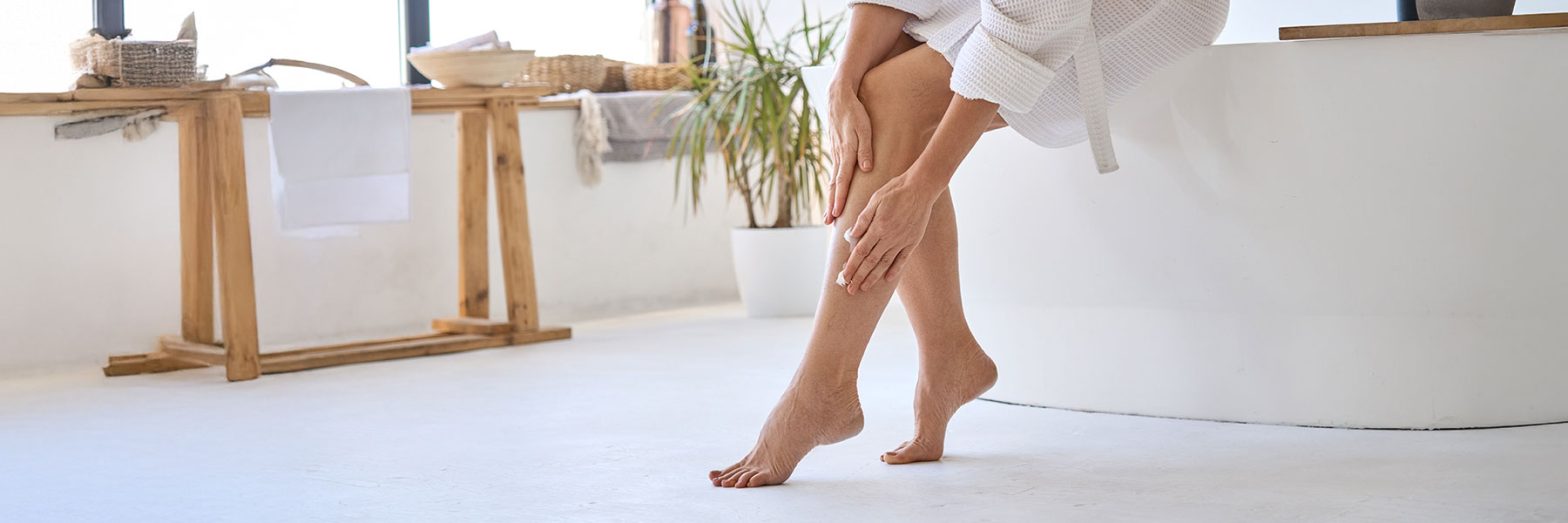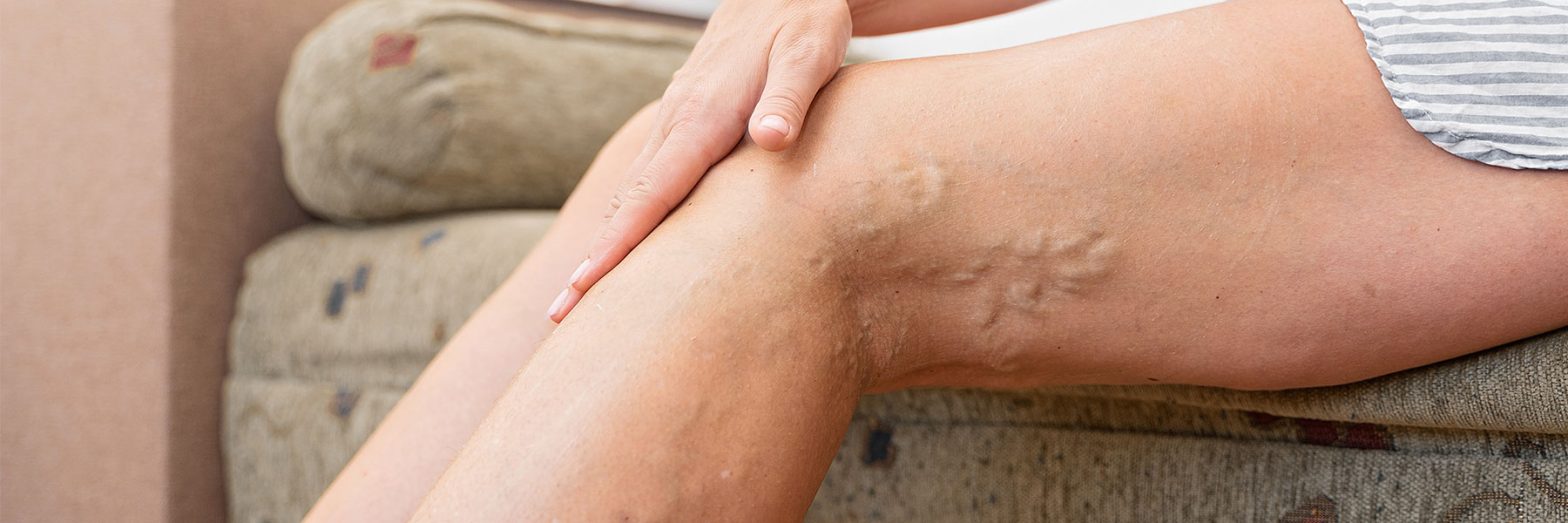Understanding the difference between Thread and Varicose Veins
VARICOSE VEINS
In order to work properly, veins are equipped with valves that help our blood flow in the correct direction without backtracking, but when those valves fail, then Thread and Varicose Veins can form.
Varicose Veins and Spider Veins however are two entirely different leg problems that need to be addressed in varying, case-dependent, ways.
Spider Vein or Varicose Vein: What’s the difference?
What are Thread Veins?
Thread veins, also referred to as Spider veins are a common problem, occurring in roughly 15% of men and 25% of women. They are small, thread-like purple or red lines with a maximum diameter of around 1mm that rest very near the surface of the skin. Thread veins are normally flat and very rarely protrude outwards or create a bump.
They occur when blood vessels lose their elasticity and widen. Factors that attribute to thread veins include genetics, minor injury, sun damage, weight gain, pregnancy, age, hormones, history of blood clots and excess pressure (sneezing can cause thread veins on the face).
They can be found on the legs and face including veins under the eyes.
Key facts:
- Less than 1mm in diameter.
- Superficial.
- Flat.
- Often purple/red in colour.
Very fine or light spider veins are usually just cosmetic and can often be addressed by a specialist therapist with laser treatment or micro sclerotherapy.
What are Varicose Veins?
Varicose veins are large veins, often with a diameter of ¼ of an inch or more. They will sometimes grow from their original size and can be painful and itchy for sufferers, with throbbing and tired legs a common occurrence. In terms of appearance, varicose veins can somrtimes be blue or purple in colour. They often sit close to the the surface of the skin and can have a bumpy or lumpy or look.
The damaged veins occur when one-way valves that transport blood around our body fail, and cause a ‘reflux’ of blood in the channel. Like spider veins, the biggest factor in a varicose vein occurring is genetics, but weight gain, pregnancy, age and long periods of standing are also often attributed to the disease.
Varicose veins are a medical issue and always need to be addressed by an experienced surgeon to make sure they are rid of effectively.
Key Facts:
- Usually larger than 3mm in diameter.
- Normally involving a major vein of the leg.
- When near the surface, normally appear lumpy or twisted.
- Often blue or purple in colour.
The easiest way to understand how veins work is by comparing them to trees
The Roots
The largest vein in your body connects straight to the heart and is known as the vena cava. There are two of them, the superior one, which carries blood from the upper body, and the one we’re interested in, which carries blood from the legs – the inferior vena cava.
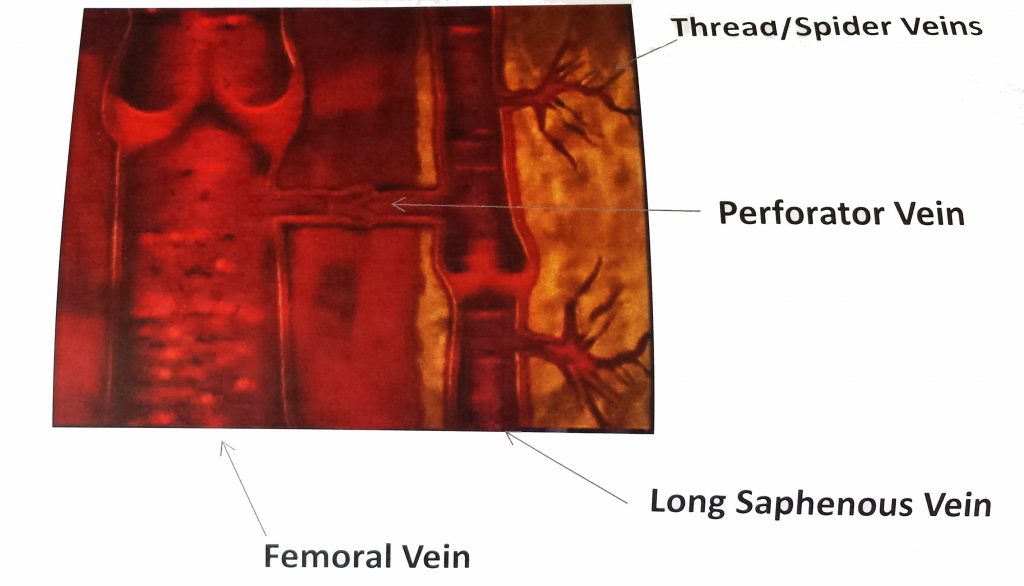
The Trunk
The femoral vein is connected to the inferior vena cava and is the longest vein in your body, spanning the length of both your legs. These are paired with an artery and lie deep within groups of muscles. They are connected to superficial veins by perforator veins, which are an essential part of the blood drainage system.
The Branches
Superficial veins like the saphenous veins are the ones that lie closest to the skin and are subject to becoming varicose. They carry less blood than deep veins and play an important part in cooling the body. These veins become varicose when their valves stop functioning properly, causing blood to pool and the vein to become large and swollen.
Varicose Veins are usually blue or purple, with a torturous, raised pattern. They can become itchy, cause you discomfort when walking and they can also be painful. Despite the limitations they can impose on a person, the NHS won’t usually treat them despite a change in guidelines in 2013, but in 10% of cases, those who leave their Varicose Veins untreated end up developing venous ulcers, which cause chronic leg wounds and can be rather painful.
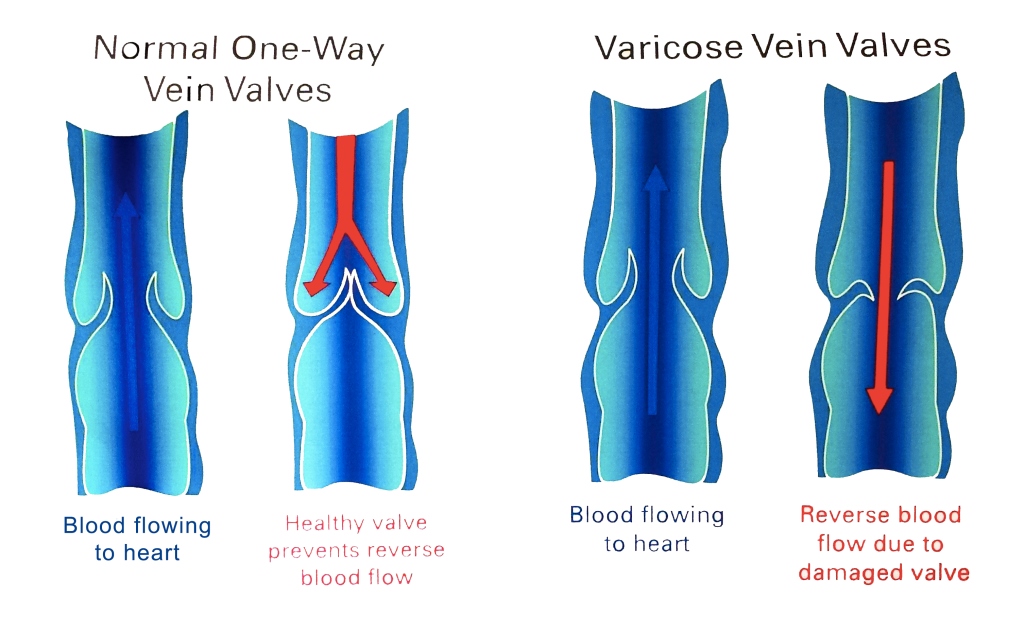
The Leaves
The smallest of superficial veins that extend from far larger ones are known as Thread Veins or Spider Veins. These are tiny blood vessels that often appear in blue and red clusters of thin lines. They aren’t raised like Varicose Veins and since they don’t hurt, their removal is often seen as a cosmetic procedure. However, the Edinburgh Vein Study (2000) showed that 30% of those with Thread Veins ended up developing Varicose veins.
Related information: The ultimate guide to Thread or Spider Veins, all you need to know.
What are the treatment options for varicose veins?
Varicose Vein Treatments
To treat Varicose Veins you used to have to rely on Vein Stripping and go under general anaesthesia to have unwanted veins forcefully removed from your body. Not pleasant.
In fact, the National Institute of Clinical Excellence (NICE) changed its guidelines in July 2013 to recommend for Vein Stripping (75.7% success rate) to only be used in rare cases, and that instead, such veins should preferably be treated by RFA or EVLA.
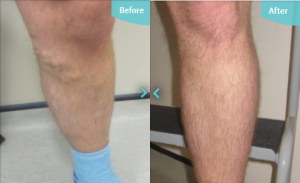
Endovenous Laser Ablation (EVLA)
EVLA treatment involves a very thin laser-tipped fibre being inserted and guided through your veins to the very edge of the unhealthy one. As the fibre is pulled back, the laser tip works to collapse the vein’s walls so that the whole of it is eradicated all the way down to its deep vein source. By removing that whole branch completely ensures that the trunk only directs nourishment to the remaining healthy branches – thus nipping the problem right in the bud. EVLA treatment is minimally-invasive, performed as a day case procedure under local anaesthetic. It’s advantageous success rate has helped it to be recognised as The National Institute for Health and Care Excellence’s Gold Standard treatment for varicose veins.
Radiofrequency Laser Ablation (RFA)
RFA treatment uses radiofrequency thermal heat energy to shrink and close off varicose veins. The collagen within the vein wall shrinks which stops blood from flowing through the vein. As the blood is blocked from flowing through the valve it gradually empties before sealing off completely. The blood is re-routed to deeper healthy veins, and the closed-off varicose vein will gradually be absorbed by the body over time. Performed in clinic, under local anaesthetic – like EVLA treatment, RFA is also recommended by NICE as a Gold Standard varicose vein treatment.
VenaSeal
At The Private Clinic, we also offer VenaSeal treatment which uses a medical adhesive to close varicose veins. This is a great treatment for patients who have a needle phobia as VenaSeal only requires a single injection per vein. An ultrasound is used to guide the small catheter through the affected veins which dispenses small amounts of medical grade Sapheon Glue. The vein will then close and be gradually absorbed by the body.
We also have Foam Scelerotherapy and Phelebectomy treatments available for those that are not suitable for EVLA or VenaSeal treatments.
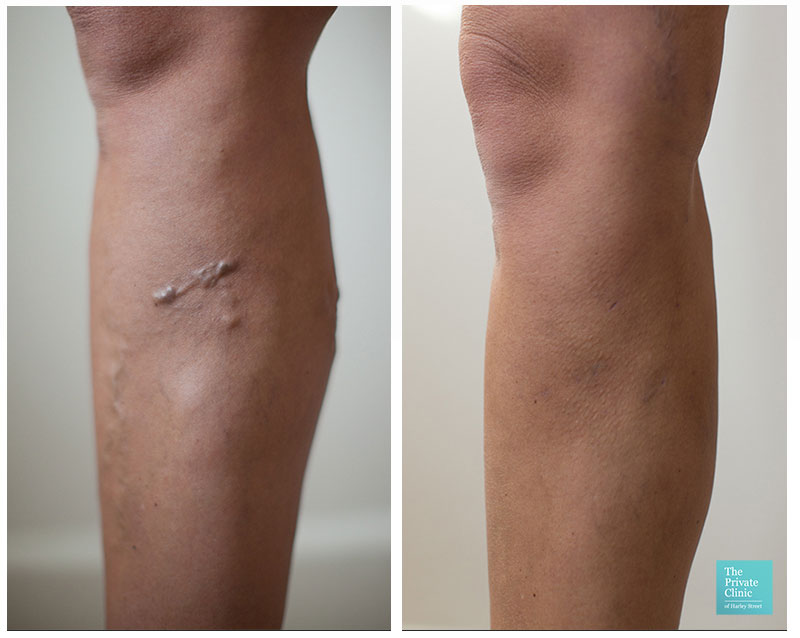
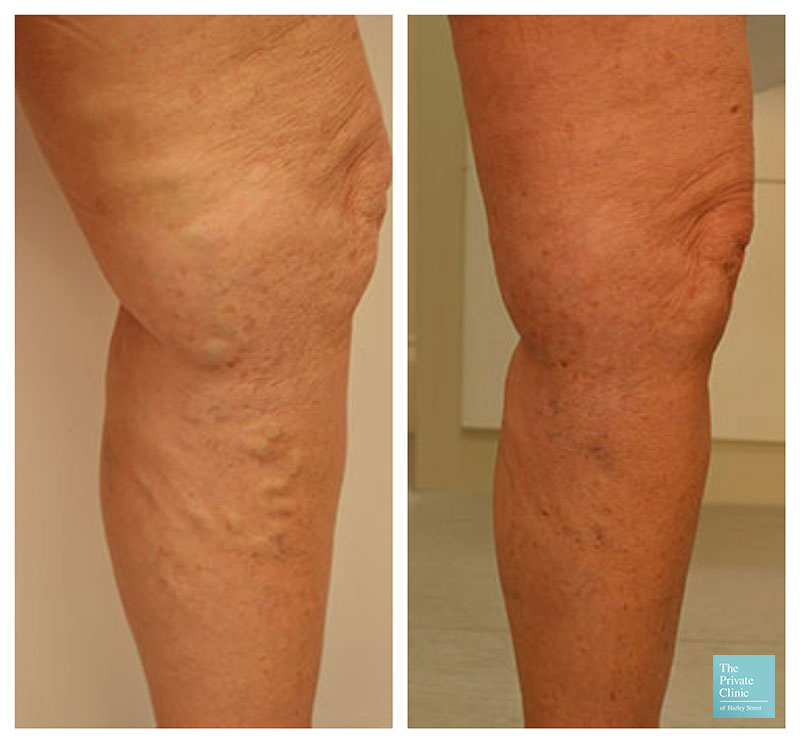
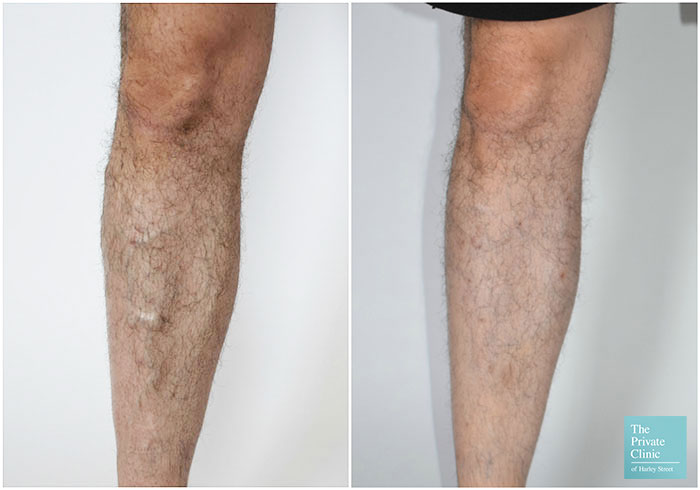
What are the treatment options for spider veins?
Thread Vein Treatments
Thread Veins are better suited to MicroSclerotherapy or laser treatments such as CoolGlide.
Microsclerotherapy
Microsclerotherapy involves injecting a sclerosant solution into the small veins which forces them to collapse. It’s a popular and effective way to eliminate surface thread veins on the legs. Due to the nature of thread veins, it is often difficult to achieve complete removal of each thread vein with just one micro sclerotherapy treatment. We recommend 2-3 treatment sessions spaced 6 weeks apart. The best visible results tend to show from 2 to 3 months after your final treatment.
Laser Thread Vein Treatment
The majority of our laser thread vein treatments are performed using Cutera CoolGlide. This treatment works by directing pulses of light energy at the unwanted thread veins which causes the blood within them to coagulate and divert back into veins located deeper below the surface of the skin. Usually, 1-2 treatments are recommended depending on the severity of the veins. Results are noticeable 2-6 weeks after treatment, but the best results are seen after 2 months.
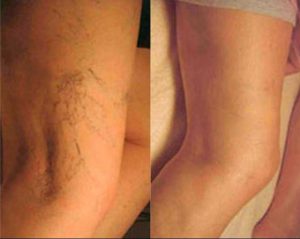
We also offer treatments for facial thread veins and under eye thread veins.
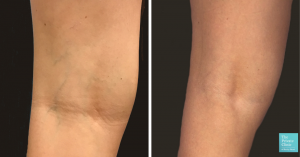

Why choose The Private Clinic for spider vein or varicose vein treatment?
We’ve pioneered the use of EVLA treatments and are proud to say that we are one of the UK’s most recognised vein treatment centres.
- The least invasive method for varicose veins and thread veins removal treatment for your legs, body and face.
- Our Consultant vascular surgeons are pioneers in EVLA (Endovenous Laser Ablation) and have treated thousands of patients.
- No lengthy downtime or recovery required.
- The NICE (National Institute for Clinical Excellence) Gold Standard for treatment of Varicose Veins findings show that the success rate after five years for EVLA is 95.4%.
- A consultation with one of our Consultant Vascular Surgeons costs £150, including a free ultrasound scan of your legs (usually priced between £350 and £450 at most clinics and private hospitals).
- We focus on the underlying cause of your veins and you will only see a Consultant Vascular surgeon for varicose veins.
- We have treated thousands of patients who have regained their confidence whilst avoiding health issues.
- Treatment takes one hour, you can go home shortly after being treated.
- We have carried out over 7,000 procedures in treating Veins.
Helpful Links
- View our varicose vein before and after photo gallery.
- View our thread vein before and after treatment photos.
- Read our extensive varicose vein FAQs.
- Read our extensive thread vein FAQs
- Hear from previous patients in our varicose vein patient stories.
- Find out more in our varicose vein blogs.
- Find out more in our thread spider vein blogs.
- Download our varicose vein treatment brochure.
Expert Vascular Surgeons
- Mr Constantinos Kyriakides, MD, FRCS (Gen), FRCS (Gen Surg). GMC Number: 3275436
- Mr Dynesh Rittoo, MBChB, FRCS (Eng), FRCS (Gen Surg). GMC Number: 3556456
- Mr Rajiv Pathak, MBBS, MS, FRCS (Gen), FRCS. GMC Number: 4585309
- Mr Tahir Hussain, MBBS, FRCS (Gen, Surg.), MS Masters in Surgery. GMC Number: 3242669
We offer vein treatment consultations at our London Harley Street, Birmingham, Leeds, Manchester and Northampton clinics and consultation rooms.
To find out more about vein treatments or to book a consultation, please call 0333 920 2471 or use our vein online contact form.





